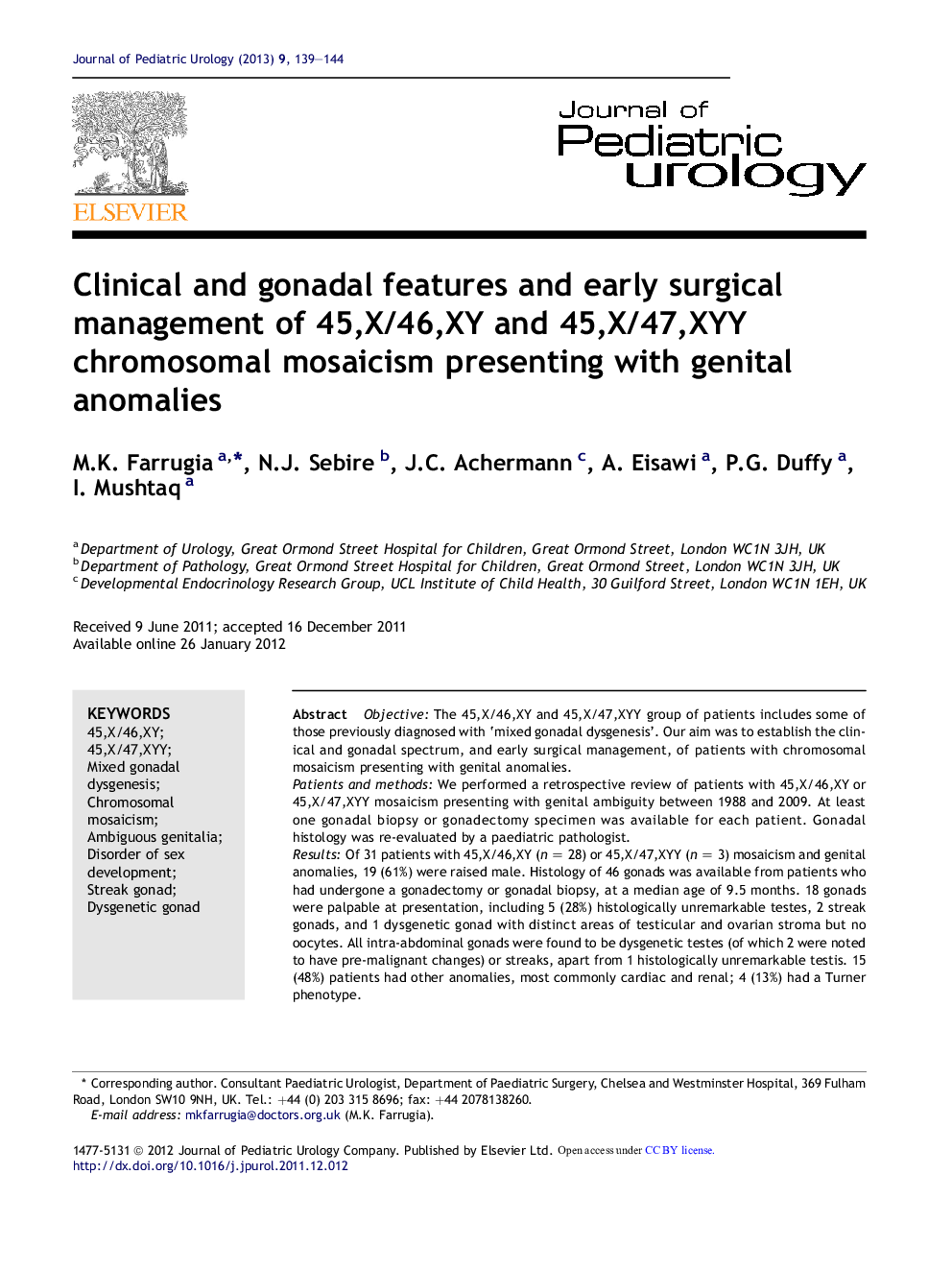| Article ID | Journal | Published Year | Pages | File Type |
|---|---|---|---|---|
| 6218403 | Journal of Pediatric Urology | 2013 | 6 Pages |
ObjectiveThe 45,X/46,XY and 45,X/47,XYY group of patients includes some of those previously diagnosed with 'mixed gonadal dysgenesis'. Our aim was to establish the clinical and gonadal spectrum, and early surgical management, of patients with chromosomal mosaicism presenting with genital anomalies.Patients and methodsWe performed a retrospective review of patients with 45,X/46,XY or 45,X/47,XYY mosaicism presenting with genital ambiguity between 1988 and 2009. At least one gonadal biopsy or gonadectomy specimen was available for each patient. Gonadal histology was re-evaluated by a paediatric pathologist.ResultsOf 31 patients with 45,X/46,XY (n = 28) or 45,X/47,XYY (n = 3) mosaicism and genital anomalies, 19 (61%) were raised male. Histology of 46 gonads was available from patients who had undergone a gonadectomy or gonadal biopsy, at a median age of 9.5 months. 18 gonads were palpable at presentation, including 5 (28%) histologically unremarkable testes, 2 streak gonads, and 1 dysgenetic gonad with distinct areas of testicular and ovarian stroma but no oocytes. All intra-abdominal gonads were found to be dysgenetic testes (of which 2 were noted to have pre-malignant changes) or streaks, apart from 1 histologically unremarkable testis. 15 (48%) patients had other anomalies, most commonly cardiac and renal; 4 (13%) had a Turner phenotype.ConclusionThe anatomy and gonadal histology of 45,X/46,XY and 45,X/47,XYY individuals with genital ambiguity do not conform to a set pattern, and hence management of each patient should be individualized according to detailed anatomical and histological assessment.
